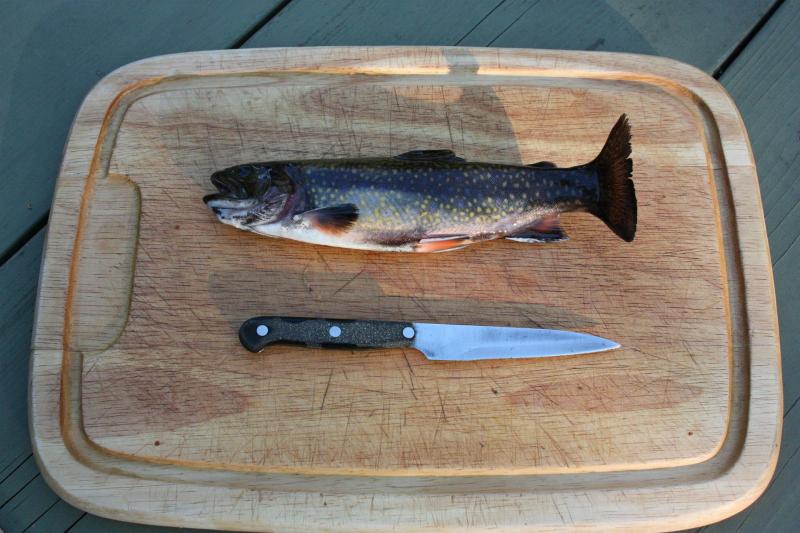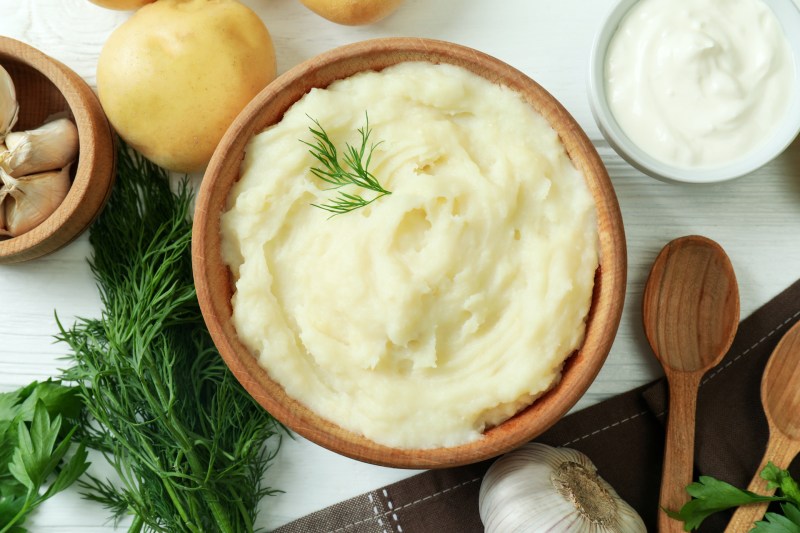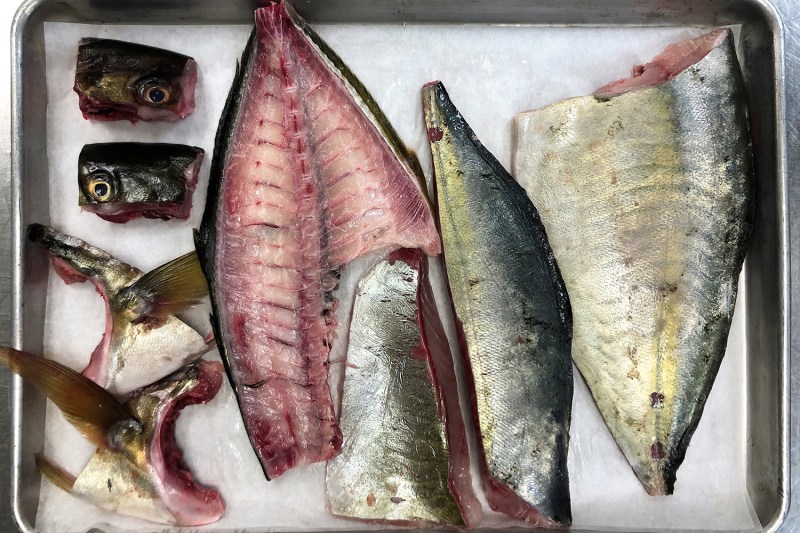You’ve definitely heard of aging beef and curing pork into charcuterie goodness before, but maybe you’re not familiar with another protein that can be aged to texture and flavor perfection: fish. While the aging process for fish is typically much shorter than that of meat (think 24 hours compared to three weeks), letting it rest before cooking or serving it as sushi gives it a more toothsome texture and deeper, richer flavor.
To learn more about how to age fish and why it’s so beneficial, we turned to Ben Steigers, the former executive chef at Boston’s PABU. The restaurant has since closed, but it specialized in traditional izakaya, like seasonal small plates, tempura, house-made tofu, and fresh sushi and sashimi, some of which was made even more delicious by employing aging techniques. If you want to try it for yourself, follow Steigers’ careful instructions on how to age fish at home.
The benefits of aging fish

Just like aging a great piece of delicious wagyu beef, aging fish helps intensify the flavor and improve the texture of the meat. As fish is aging, amino acid chains break down, and this process creates the rich, umami flavor that makes these sea creatures so appealing. “Enzymes located in the muscle cells of the fish break down proteins, fats, and glycogen into sugars and different amino and fatty acids, while flavors ranging from umami to sweetness to subtle bitterness develop in the process,” Steigers said. “With moisture reduced in the careful process, these flavors shine. The enzymes also help to break down connective tissues, leaving fish more tender and with palatable profiles.”
Like most living things, fish go through rigor mortis following death. When cells run out of energy, they basically tense up. But as the fish ages and enzymes begin to break down muscle fibers, the fish becomes more tender. “Any experienced tuna fisherman will tell you that while the spectacle of cutting up a tuna on the boat as soon as it is caught may seem very appealing, the tuna will be tough, chewy, and taste watered down,” Steigers stated. “It isn’t until the fish has sat in the fridge for a few days that it will become more tender and flavorful.”
The best types of fish to age

Meaty types of fish are best for aging because they have stronger sinews — think whitefish like fluke, snapper, bass, knifejaw, and striped jack. After about a week of aging, their tendons begin to soften and leave behind a creamy, melt-in-your-mouth texture. Chef Steigers’ favorite fish to age is Kanburi, or winter yellowtail, because it is a hunter fish and develops a beautiful fatty flesh.
“Because the fish are so muscular, the flesh tends to be tough and chewy, with the belly meat being so tight that it can only be used after deeply scoring or torching to tenderize it,” he said, noting that he’ll age fish for two, sometimes three, weeks. “After, the muscle fibers have all relaxed and we can serve the belly sliced thick, as it is meant to be. The incredible umami flavor, matched with the intense fattiness of the belly, is one of the true rare pleasures in life.”
Although Steigers said yellowtail was his favorite, he recommended avoiding it if it’s your first time aging fish. Oilier fish like yellowtail, salmon, and tuna are more difficult for the beginner, so save them for your third or fourth attempt at the process.
Meaty types of fish are best for aging because they have stronger sinews — think whitefish like fluke, snapper, bass, knifejaw, and striped jack
It may seem like a no-brainer, but if you’re going to try your hand at aging fish at home, you need to buy the freshest product possible. Try to find a source that sells fish the same day they are caught. “Look for fish that are still in rigor mortis,” Steigers stated. “These fish will be stiff, as the muscle fibers have all tensed and are fixed that way.”
If you spot fish in the market that has a rainbow-like sheen on the surface, Steigers said it’s a telltale sign that it’s old. “This is the fish oil that has escaped the cell structure and is the source of the ‘fishy’ smell and flavor that can make fish extremely off-putting,” he said.
Better yet, if you can buy live fish, go for it. Steiger told us these are great candidates, so long as they’re coming from a reputable source and a clean, well-filtered tank.
How to safely handle and prepare aged fish

Aging fish at home takes a lot of care and patience. If you neglect to follow the proper steps, you could ruin the fish or get sick from eating it. But with Chef Steiger’s helpful instructions, you’ll be on your way to deliciously tender, umami goodness in no time.
- “First, avoid letting the fillet meat come into contact with any blood or viscera,” Steiger stated. “As soon as the fish is received, the fish should be gutted, and the gills, as well as any residual blood along the spine, should be cleaned and rinsed out.” Also, be super careful when opening the fish’s belly so you don’t puncture any of the organs because their inside liquid could stain or contaminate the meat.
- Fish should be left whole until you plan to eat it. “After viscera is removed, try to leave the head, tail, and fillets on the bones during the aging process,” he explained. “This minimizes the meat’s exposure to oxidation, as the skin and bones will act as a barrier.”
- As the fish ages, it’s important to keep it clean and wrapped properly. “If there is slime or blood anywhere on the fish, wash the fish in salty water, then rinse it off with clean, running water,” he said. “Once cleaned, make sure to pat the fish dry with a sterile paper towel, as moisture will breed bad bacteria. Once dry, stuff the belly cavity, as well as the gill cavity, with paper towels. This will soak up any excess moisture that comes from the fish as it ages, keeping it dry and clean. If the head or tail are removed, wrap the ends with paper towels to soak up any blood that may escape the spine. Then, wrap the whole fish with waxed butcher paper, and then with plastic wrap. Wrapping as tightly as possible and pressing out any air gaps will help slow down the oxidation process.”
- Finally, make sure to check your fish every day for signs of aging or spoilage. The fish should remain dry with clear eyes, and areas with red blood should stay red, not turn black or brown. “If the fish begins to smell bad, DO NOT EAT IT,” he warned. “Any funky, cheesy, rancid, or off-putting smells are a very bad sign, and the fish should be disposed of. A layer of slime (inside or outside the fish), the meat or blood turning brown or black, or the eyes becoming cloudy are also [negative] things to look out for.” He recommended aging each fish for 24 to 48 hours. Check on it after the first day to make sure it looks good, then rewrap the fish in clean paper and plastic. This will keep the fish fresh as it ages during day two.
What tools do you need to age fish?
One can age fish without too much specialty equipment. The pros may take advantage of things like torches and specific blades, but you can get away with a few basics. A sharp and reliable chef’s knife is key, as is butcher paper, plastic wrap, and some good storage containers. Having a deep-set sink only helps, especially if you need to clean the fish or are dealing with larger species.
What side dishes pair well with aged fish?

Since aged fish has a strong flavor, you want side dishes that can complement it without overpowering it. Roasted or grilled vegetables like asparagus, broccoli, or fennel add a touch of sweetness and earthiness that cuts through the richness of the fish.
A light and refreshing salad with a vinaigrette dressing helps balance the richness of the fish. You can use a variety of greens, such as arugula, mixed greens, or fennel, and add other ingredients like chopped apples, fennel, or red onion for sweetness and crunch.
Mashed potatoes or creamy polenta provide a nice contrast to the texture of aged fish. You can also add herbs like dill or chives to the mashed potatoes for extra flavor. Other starches like rice, quinoa, or couscous are also good options for soaking up the flavors of the fish and the sauce. You can also try a pilaf, which is a rice dish cooked with broth and vegetables.
Aging fish is a relatively easy task and a great way to preserve and enhance the flavors of your favorite fish. Don’t forget to pair seafood with wine and check out the popular tinned fish trend. They all go to show that there’s plenty of great eating to be done in the realm of fish.



